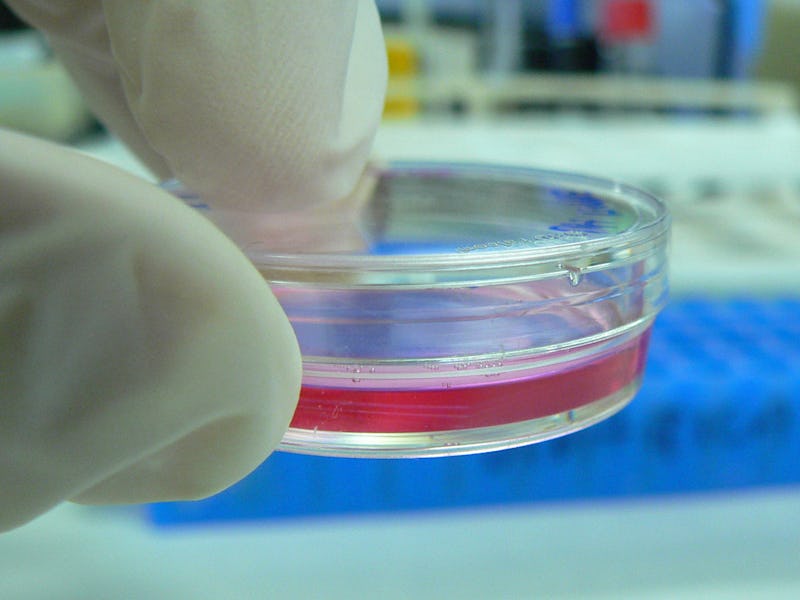Scientists at Ohio State Have Grown the First Complete Brain in a Dish
The eraser-sized mini-brain opens up huge opportunities for drug testing.

Scientists on what they call “a shoestring budget” have grown the first complete brain in a dish, at Ohio State University. Engineered from adult human skin cells, the brain organoid is about the size of a pencil eraser and has all of the structures you’d expect from a five-week-old fetus brain. As the most complete brain model ever grown in a lab, it opens up huge opportunities for testing experimental drugs for brain diseases.
Dr. Rene Anand, who led the work, unveiled his impressively complete lab-grown brain at the 2015 Military Health System Research Symposium on Tuesday. “The gene expression pattern are a 99 percent match to those of the human brain embryonic database Brainscan at the Allen Institute,” Anand told Inverse. “It also morphologically looks like an embryonic brain.”
The brain’s still “missing” about 1 percent of its genes, but Anand thinks it’s likely that they’d be expressed if the brain were allowed to grow past the 12-week point. But given the lab’s real interests — neurodevelopmental disorders — there wasn’t much point in stretching their limited resources to grow a more mature brain.
Cool factor aside, lab-grown brains are useful because they eliminate the need for actual brains for studying brain disease. Obvious ethical issues abound in conducting research on experimental drugs for disorders like Alzheimer’s, Parkinson’s, and autism, but Anand’s model could allow scientists to efficiently test and develop pharmaceuticals without involving people. In addition, the mini-brains will make it easier to study the underlying genetic factors leading to disease and their susceptibility to environmental influences.
Anand and his colleague, Susan McKay, are already using their brains to conduct autism research in their lab. “We are moving the autism front forward,” said Anand, but he admits that conducting research is difficult if there isn’t any government interest.
“I think if they fund us, we can move things forward, but it largely depends on funding,” he said. “We’re a very tiny lab, two people, shoestring budget. We’re not big guys.” They may not be, but they’re doing big things.